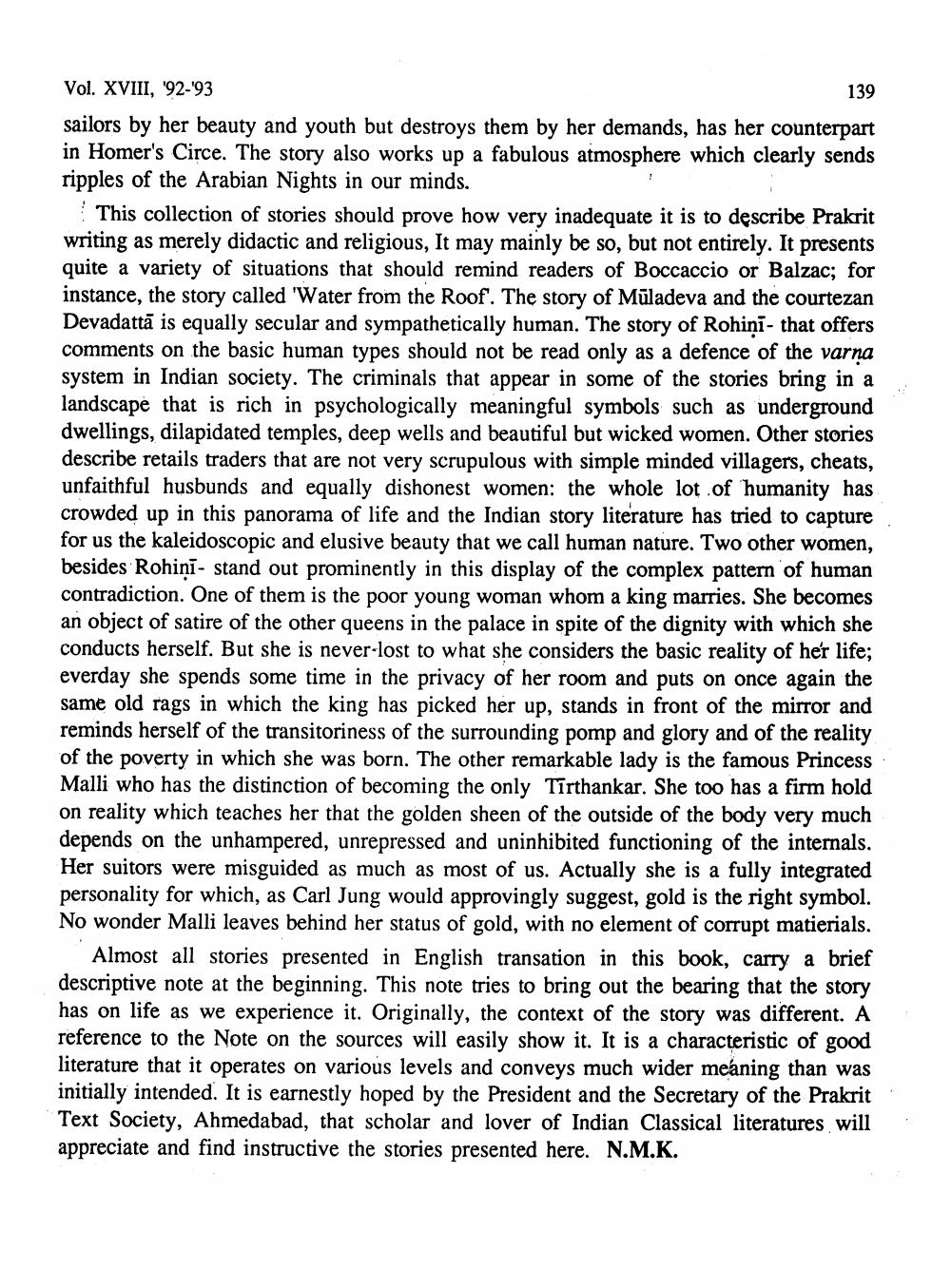________________
Vol. XVIII, '92-'93
139 sailors by her beauty and youth but destroys them by her demands, has her counterpart in Homer's Circe. The story also works up a fabulous atmosphere which clearly sends ripples of the Arabian Nights in our minds.
This collection of stories should prove how very inadequate it is to describe Prakrit writing as merely didactic and religious, It may mainly be so, but not entirely. It presents quite a variety of situations that should remind readers of Boccaccio or Balzac; for instance, the story called 'Water from the Roof. The story of Mūladeva and the courtezan Devadattā is equally secular and sympathetically human. The story of Rohini- that offers comments on the basic human types should not be read only as a defence of the varna system in Indian society. The criminals that appear in some of the stories bring in a landscape that is rich in psychologically meaningful symbols such as underground dwellings, dilapidated temples, deep wells and beautiful but wicked women. Other stories describe retails traders that are not very scrupulous with simple minded villagers, cheats, unfaithful husbunds and equally dishonest women: the whole lot of humanity has crowded up in this panorama of life and the Indian story literature has tried to capture for us the kaleidoscopic and elusive beauty that we call human nature. Two other women, besides Rohiņi- stand out prominently in this display of the complex pattern of human contradiction. One of them is the poor young woman whom a king marries. She becomes an object of satire of the other queens in the palace in spite of the dignity with which she conducts herself. But she is never-lost to what she considers the basic reality of her life; everday she spends some time in the privacy of her room and puts on once again the same old rags in which the king has picked her up, stands in front of the mirror and reminds herself of the transitoriness of the surrounding pomp and glory and of the reality of the poverty in which she was born. The other remarkable lady is the famous Princess Malli who has the distinction of becoming the only Tīrthankar. She too has a firm hold on reality which teaches her that the golden sheen of the outside of the body very much depends on the unhampered, unrepressed and uninhibited functioning of the internals. Her suitors were misguided as much as most of us. Actually she is a fully integrated personality for which, as Carl Jung would approvingly suggest, gold is the right symbol. No wonder Malli leaves behind her status of gold, with no element of corrupt matierials.
Almost all stories presented in English transation in this book, carry a brief descriptive note at the beginning. This note tries to bring out the bearing that the story has on life as we experience it. Originally, the context of the story was different. A reference to the Note on the sources will easily show it. It is a characteristic of good literature that it operates on various levels and conveys much wider meaning than was initially intended. It is earnestly hoped by the President and the Secretary of the Prakrit Text Society, Ahmedabad, that scholar and lover of Indian Classical literatures will appreciate and find instructive the stories presented here. N.M.K.




